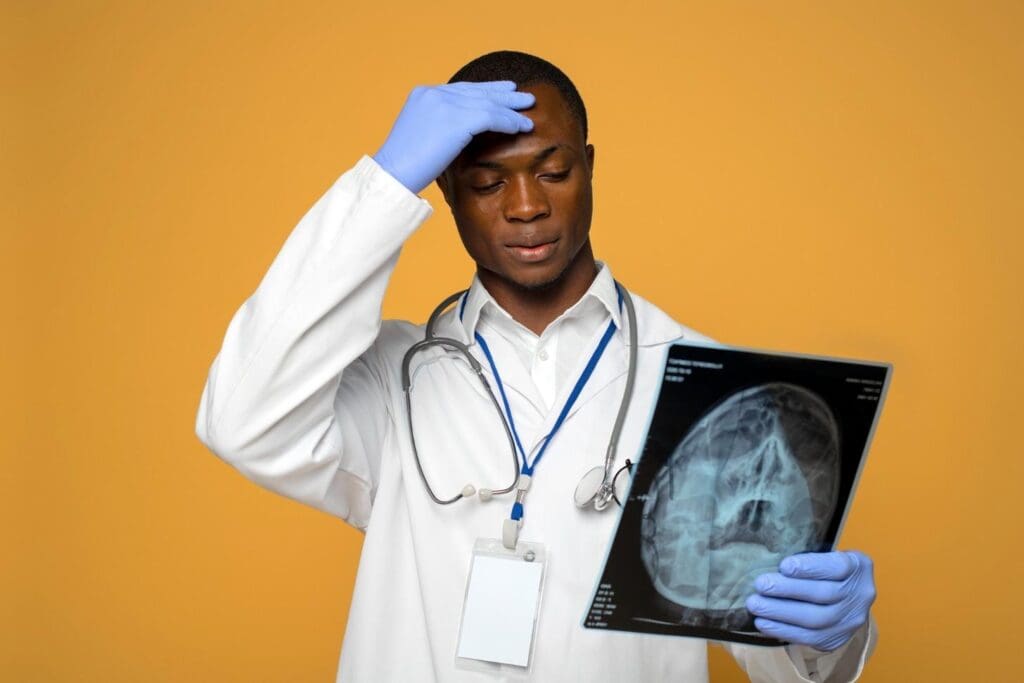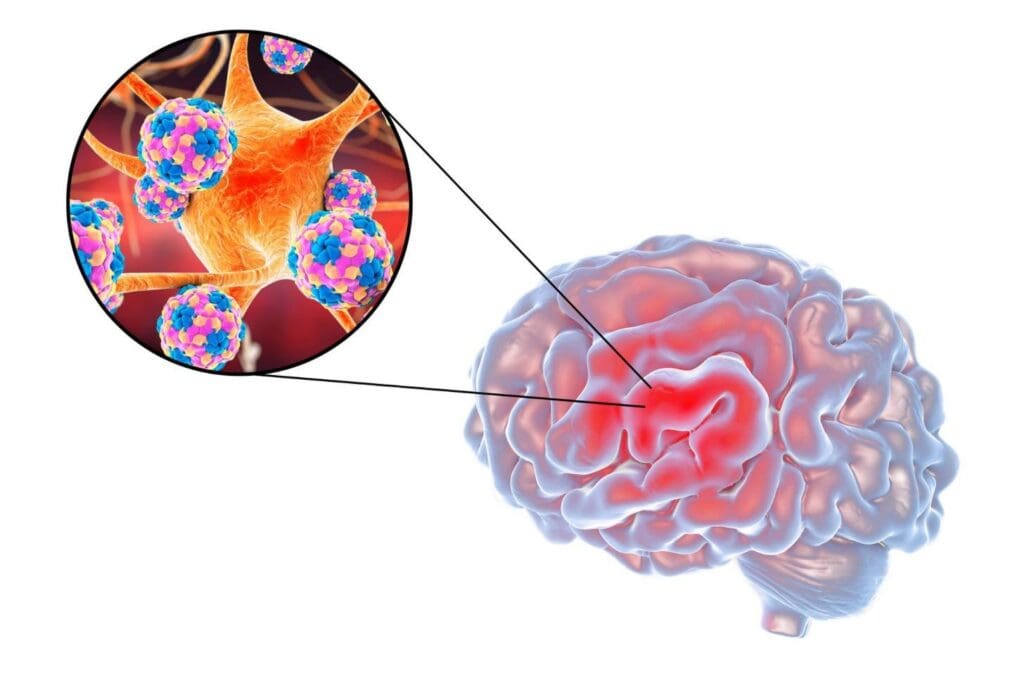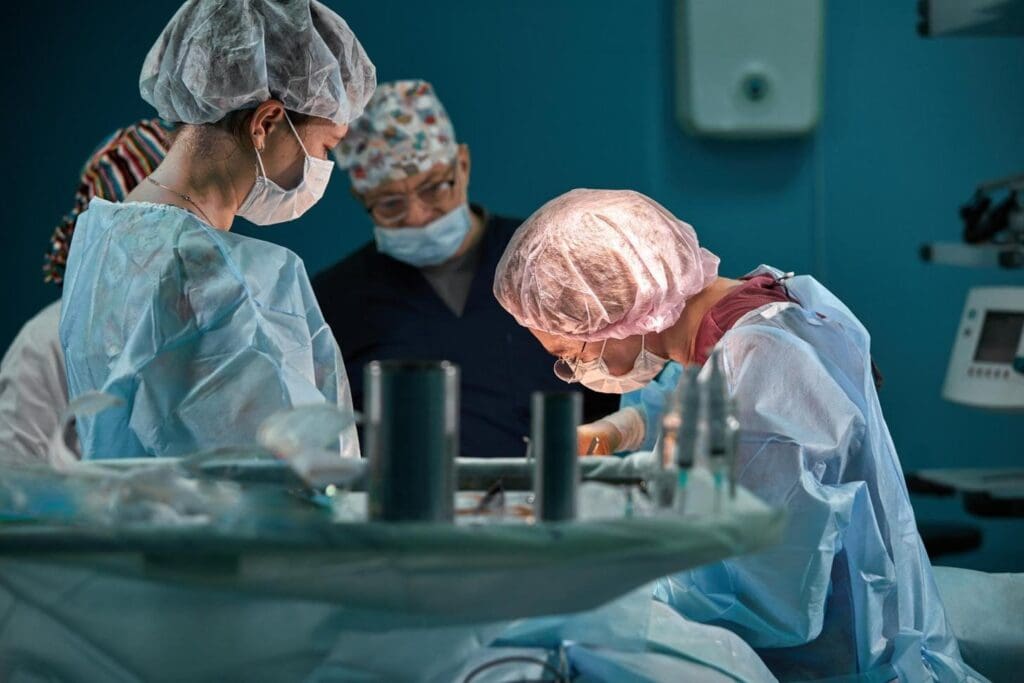Last Updated on November 4, 2025 by mcelik

Deciding if a tumor can be removed is a big moment for patients and families. At Liv Hospital, our team of experts looks at each case closely. We use the newest surgical methods to find the best treatment. Explore cutting-edge Herniated Disc Treatment options that reduce pain and improve recovery time.
The chance of tumor removal depends on many things. These include the tumor’s type, where it is, and how big it is. Also, the patient’s health is very important. We use advanced treatments and care to help patients do well.
Our team is dedicated to top-notch healthcare. We support patients from all over the world. We make sure treatment fits each person’s needs, focusing on safety, new ideas, and kindness.

It’s important for patients and doctors to understand brain tumors. This knowledge helps make treatment choices and improves results. Brain tumors, whether they grow back or spread, can greatly affect a person’s life. So, finding and treating them quickly is key.
Brain tumors are divided into two main types: primary and metastatic. Primary tumors start in the brain, while metastatic ones come from other parts of the body. Benign tumors are not cancerous and might need surgery or watching. Malignant tumors, being cancerous, often need surgery, radiation, and chemotherapy.
Common brain tumors include meningiomas, gliomas, and schwannomas. Meningiomas are usually not cancerous and grow from the brain’s protective membranes. Gliomas come from brain cells and can be more or less serious. Schwannomas are not cancerous and grow from nerve cells’ protective sheaths.
Symptoms of brain tumors vary a lot. They can include headaches, seizures, nausea, vomiting, and changes in thinking or mood. Doctors use MRI or CT scans and sometimes a biopsy to find and check tumors.
Finding the right diagnosis is key for the best treatment. We use high-tech scans to see the tumor and how it affects the brain. This helps plan the best way to treat it.
Surgery is often the first step for many brain tumors, mainly if they’re not cancerous or cause big problems. The goal is to take out as much of the tumor as we can without harming the brain. Sometimes, we can’t remove all of it because of where it is.
We work together with many experts to treat brain tumors. This team approach helps ensure the best care. Surgery, when it’s possible, can greatly help patients live better lives.

Removing brain tumors is a complex process. It depends on the tumor’s type, size, and location, and the patient’s health.
Modern surgery and technology have made treating brain tumors better. Studies show that how well surgery works depends on the tumor and the patient’s health.
Several factors decide if a brain tumor can be removed. These include:
Dr. John Smith, a renowned neurosurgeon, notes, “Deciding if a brain tumor can be removed is complex. It needs a team of experts.” This team approach ensures patients get care that fits their needs.
Some tumors, like benign ones or those with clear boundaries, can be removed fully. This is true for:
Removing the tumor fully can greatly improve a patient’s chances of recovery. We use advanced imaging and monitoring during surgery to ensure the best results.
Not all tumors can be removed fully. In these cases, we aim to remove as much as possible. This can:
We are always learning and improving how we treat brain tumors. Our team works with patients and their families to find the best treatment options. We aim for the best possible outcomes.
Getting ready for surgery is key to treating brain tumors well. Surgeons use this time to plan how to help each patient. They look at many things to make sure the surgery goes right.
Tests like MRI (Magnetic Resonance Imaging), CT (Computed Tomography) scans, and PET (Positron Emission Tomography) scans are very important. They give us clear pictures of the brain tumor and the area around it. This helps us see how big the tumor is and how it might affect the brain.
These tests are vital for planning the surgery. For example, functional MRI (fMRI) shows us which parts of the brain are important. This way, we can avoid hurting these areas during surgery.
Understanding the brain’s functions is also important. We use diffusion tensor imaging (DTI) and magnetoencephalography (MEG) to see how the brain works. This helps us know which parts are important and how they relate to the tumor.
Knowing this, we can plan the surgery carefully. We aim to remove the tumor while keeping important brain functions safe. This makes the surgery safer and helps the patient recover better.
Checking the patient’s health is also a big part of getting ready for surgery. We look at their medical history, current health, and any risks that might affect the surgery or recovery. This includes cardiac evaluation, pulmonary function tests, and laboratory tests to make sure the patient is ready for surgery.
| Assessment Component | Purpose | Examples of Tests |
| Imaging and Diagnostic Tests | To visualize the tumor and its impact on surrounding brain tissue | MRI, CT scans, PET scans |
| Functional Mapping of the Brain | To identify critical brain areas and their relation to the tumor | fMRI, DTI, MEG |
| Patient Health Assessment | To evaluate the patient’s overall health and surgical risk | Cardiac evaluation, pulmonary function tests, laboratory tests |
By using the results from these tests, we can make a detailed plan for the surgery. This careful planning is essential for a successful brain tumor surgery.
Neurosurgery has made big strides, leading to new ways to remove brain tumors. Each method has its own benefits and challenges. The right surgery depends on the tumor’s location, size, and type, and the patient’s health.
A craniotomy is the most common surgery for brain tumors. It involves taking out a part of the skull to reach the brain. This lets surgeons see and remove the tumor directly.
Though effective, craniotomy is a big surgery needing careful planning and recovery. New surgical methods and technology have made it safer for patients.
Minimally invasive surgical techniques are gaining popularity. They use small cuts and special tools, causing less damage and helping patients recover faster.
These methods are great for tumors in hard-to-reach brain areas.
Awake brain surgery, or awake craniotomy, keeps the patient awake during surgery. It’s used for tumors near important brain areas. This way, surgeons can avoid harming these areas.
Keeping the patient awake lets surgeons check brain function in real-time. This reduces the risk of damage.
Stereotactic radiosurgery is a precise radiation therapy for brain tumors. It’s not a traditional surgery but is considered one because of its precision and success.
This non-invasive method targets the tumor with high radiation. It protects the healthy brain tissue around it.
Different brain tumors have different success rates for surgery. Knowing these rates helps set realistic hopes and make better treatment choices.
Benign tumors like meningiomas and schwannomas often have high success rates for surgery. They are well-defined and don’t spread into the brain, making them easier to remove. Research shows that patients with meningiomas have a good chance of survival if the tumor is fully removed. For more on benign brain tumors, check out Liv Hospital’s page on silent brain.
Low-grade gliomas grow slowly. They are not as dangerous as other tumors but can cause problems because of where they are. Surgery is often the main treatment, and it works well if the tumor is easy to reach and remove.
Glioblastoma is a fast-growing and dangerous tumor. It’s harder to remove than benign tumors because it spreads into the brain. Even with better surgery, the outlook for glioblastoma patients is not good.
Metastatic brain tumors come from cancer elsewhere and spread to the brain. The success of surgery depends on several things, like how many tumors there are and where they are. In some cases, surgery can help patients live longer and better.
In some cases, brain tumors are considered inoperable, which makes treatment challenging. This decision is made when the risks of surgery are too high. It’s important to find other treatment options and supportive care for patients and their families.
Brain tumors in critical areas are often not operable. These areas control important functions like speech and movement. Surgery in these spots can lead to big problems, affecting the patient’s life quality.
Critical areas include:
When brain tumors are multiple or spread out, surgery is hard. It’s tough to remove all tumors if they’re scattered. Diffuse tumors blend with normal brain tissue, making surgery risky.
| Tumor Type | Characteristics | Treatment Challenges |
| Multiple Tumors | Several distinct tumor masses | Difficulty in surgically removing all tumors |
| Diffuse Tumors | Infiltrate surrounding brain tissue | Risk of damaging surrounding healthy tissue |
Poor health can also make surgery risky. Patients with serious health issues may not be good candidates for surgery. This is because of the dangers of anesthesia and the surgery itself.
Factors affecting patient health include:
For those with inoperable brain tumors, other treatments like radiation and chemotherapy are key. Palliative care also helps manage symptoms and improve life quality.
Alternative and adjuvant therapies are key in treating brain tumors. They offer hope when surgery isn’t an option.
Radiation therapy is vital for brain tumors, mainly when surgery is not possible. We use advanced methods to hit tumor cells hard, while keeping the brain safe.
Types of Radiation Therapy:
| Radiation Therapy Type | Description | Application |
| EBRT | Delivers radiation from outside the body | Commonly used for various brain tumors |
| SRS | Highly precise radiation in a single dose | Ideal for small, well-defined tumors |
| Brachytherapy | Implants radioactive material directly into or near the tumor | Used for certain types of brain tumors |
Chemotherapy is a big part of treating brain tumors. We use different plans based on the tumor and the patient’s health.
“Chemotherapy has evolved significantly, giving new hope to patients with brain tumors.”
Dr. Jane Smith, Neuro-Oncologist
Chemotherapy Approaches:
Targeted therapies and immunotherapy are new ways to fight brain tumors. They aim to hit tumor cells without harming normal cells.
Examples include:
Clinical trials are key to improving brain tumor treatment. We join and support trials to test new treatments.
Emerging Trends:
By exploring these treatments, we keep improving care for brain tumor patients.
Brain tumor surgery is just the start. A good recovery plan is key for the best results. This plan includes care right after surgery, rehab, long-term checks, and handling side effects.
Right after surgery, care is very important. Patients are watched closely in an ICU or neurosurgical unit. We focus on controlling pain, avoiding infections, and checking for any brain problems.
A team of doctors, nurses, and others work together. They make sure pain is managed well, using the right medicines and methods.
Rehab is a big part of getting better. It helps patients get strong, think clearly, and be independent again. A team of experts creates a plan just for the patient.
Keeping an eye on patients long-term is vital. Regular visits with the neurosurgeon and others are needed. This helps catch any problems early and adjust treatment as needed.
| Follow-up Care Component | Description | Frequency |
| Imaging Studies (MRI, CT scans) | Watching for tumor changes | Every 3-6 months at first, then yearly |
| Neurological Assessments | Checking brain function and looking for changes | At each visit |
| Health and Wellness Counseling | Help with lifestyle, nutrition, and stress | As needed |
Handling side effects and problems is ongoing. Common issues include tiredness, brain changes, and mood shifts. We help patients find ways to deal with these, like medicine, therapy, or changes in lifestyle.
We offer care that goes beyond surgery. This includes recovery, rehab, and follow-up. Our aim is to help patients get better and live well. We support them every step of the way, meeting their unique needs and challenges.
Medical technology and treatment methods are getting better for brain tumor patients. Research and clinical trials are showing promise for new breakthroughs. This will help us better understand and manage these complex conditions.
Significant progress is being made in surgery, radiation therapy, and targeted treatments. These improvements are making patient care and outcomes better. This gives new hope to those dealing with brain tumors. The future looks bright with more research and development on the horizon.
We are dedicated to keeping patients and healthcare providers updated on the latest in brain tumor care. By staying ahead in research, we aim to improve lives worldwide. We want to ensure patients get the best treatment and support.
Several things matter, like the tumor’s type, size, and where it is. The patient’s health also plays a big role. We look at these to decide if surgery is right.
No, not every tumor can be removed by surgery. Tumors in key brain areas or those that spread out can’t be taken out. We look for other ways to treat these cases.
We use many methods, like craniotomy and minimally invasive surgery. There’s also awake brain surgery and stereotactic radiosurgery. Each has its own benefits and risks, and we help patients understand them.
Success rates vary by tumor type. Benign tumors like meningiomas often do well, but malignant ones like glioblastoma are tougher. We talk about these chances to set clear expectations.
If surgery isn’t an option, we look at other treatments. This includes radiation, chemotherapy, and more. We also focus on making the patient comfortable and improving their quality of life.
Recovery is key after surgery. We provide care right after, then help with physical and mental rehab. We also keep an eye on long-term health and manage any side effects.
Yes, new research and technologies are helping us fight brain tumors better. We keep up with these advances to offer the best care.
Deciding on radiation therapy depends on the tumor’s type, size, and location. We also consider the patient’s health. We discuss how radiation fits into treatment plans.
Yes, chemotherapy is an option for some brain tumors. We check if it’s right based on the tumor and the patient’s health.
Targeted therapies and immunotherapy are new and promising. We consider them for patients when other treatments don’t work.
References:
• UpSurgeOn. (n.d.). Brain Tumors: Decoding Impact on Surgery Success. https://www.upsurgeon.com/scientific-news/brain-tumors-decoding-impact-on-surgery-success/
Subscribe to our e-newsletter to stay informed about the latest innovations in the world of health and exclusive offers!